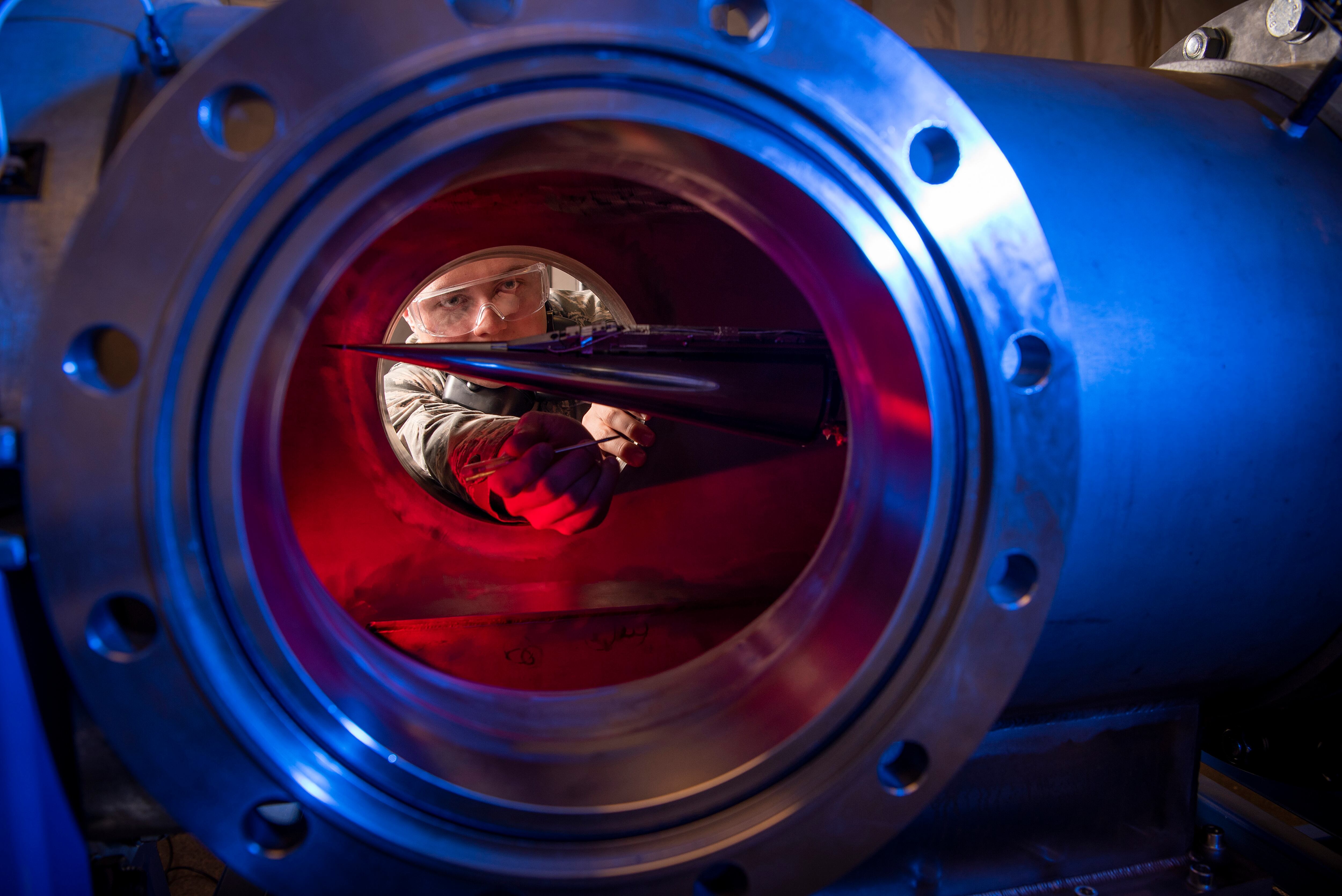WASHINGTON — The Department of Defense has launched a deep dive study into the industrial base for hypersonic weapons, in order to understand the weak spots in America’s drive towards the high-speed offensive and defensive technology.
Mark Lewis, the department’s director of research and engineering for modernization, told reporters Monday that a new “hypersonic war room” has been set up, led by him and Assistant Secretary of Defense for Acquisition Kevin Fahey, in order to identify “critical nodes” in the supply chain.
“What is the state of our base, is it positioned to produce at the scales we’re anticipating? [There are] a lot of moving parts to that. We’re obviously in a position now to develop concepts, develop prototypes, but producing at scale is a different proposition,” Lewis said. “It’s production capabilities, manufacturing capabilities, high temperature materials.”
“We want to make sure we’re not just at the tier-1 suppliers, but we’re looking at other suppliers necessary to provide at scale.”
RELATED

Lewis said to expect an “initial report” from that study group in the next few months, but also said he suspects the work will be “an ongoing activity” that evolves as the hypersonic strategy and development process becomes clearer.
As an example of the kind of thing that needs to be considered, Lewis pointed to questions of how air-breathing hypersonic cruise missiles could requires a supersonic combustion ramjet engine. The department does not currently know for sure it has the materials — or know how — for such a capability within the industrial base.
A series of Pentagon reports in the last two years have raised serious concerns about the defense industrial base, particularly when it comes to high-end materials and design knowledge for missiles. In some cases, the only supplier for critical materials come from China, the exact country the U.S. is investing in hypersonic weapons to counter.
Lewis, who served as the chief scientist for the Air Force from 2004 to 2008, also stressed the importance of building up the workforce, particularly by providing stable hypersonic research funding to universities, where the department is in the early stages of putting together a hypersonics consortium.
“We’re especially interested in leveraging parts of the university community, the nontraditional layers — the folks who haven’t done the basic high-speed fluid mechanics who can bring other capabilities to bear, [like] guidance, navigation and control, material development, systems engineering,” he said. “We think it’s important not only for development concepts but obviously to make the workforce available in industry, as well as in our government laboratories.”
The department requested $3.2 billion for research, development, testing and evaluation funds related to hypersonic weapons in FY21.
Aaron Mehta was deputy editor and senior Pentagon correspondent for Defense News, covering policy, strategy and acquisition at the highest levels of the Defense Department and its international partners.








